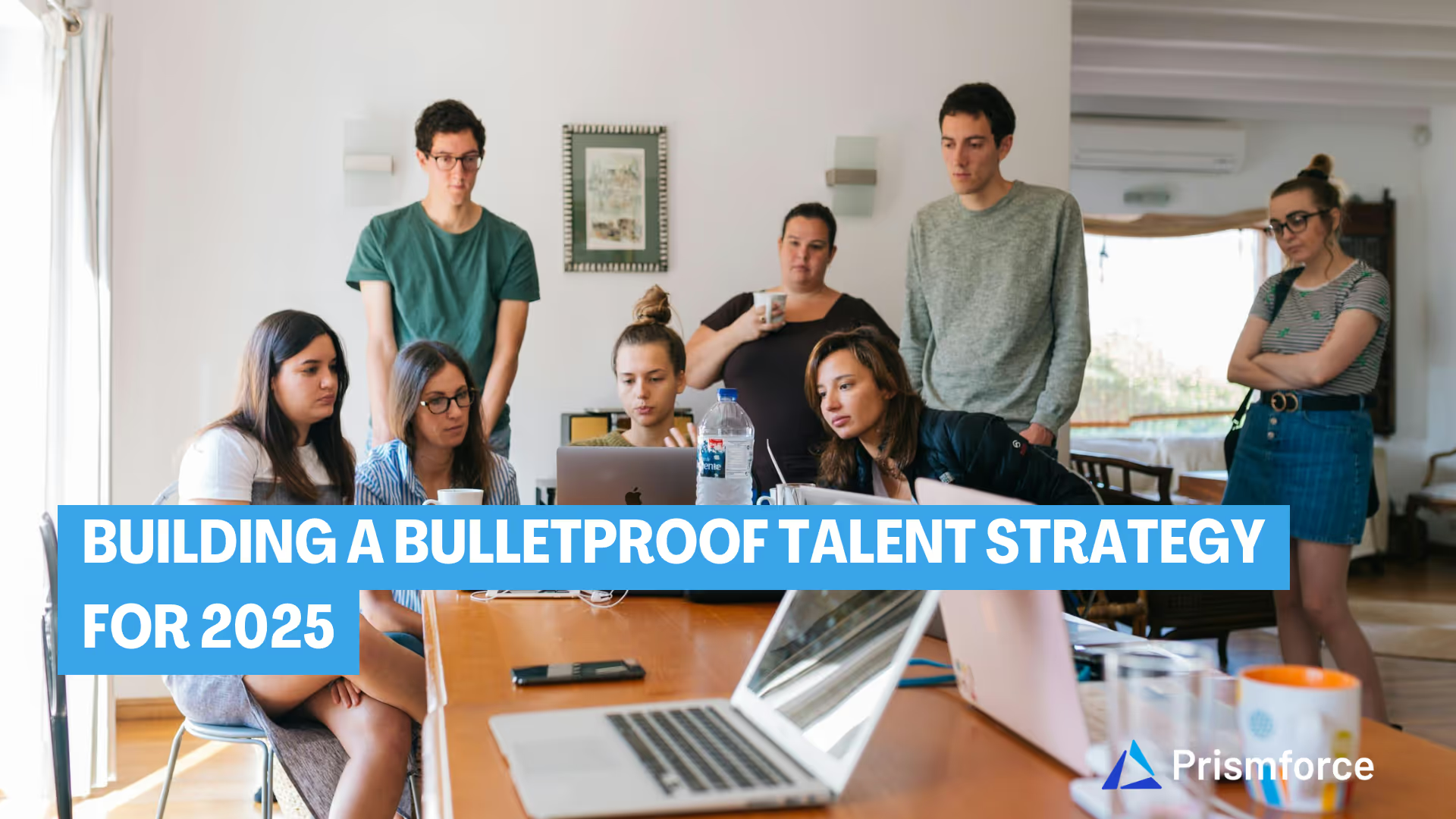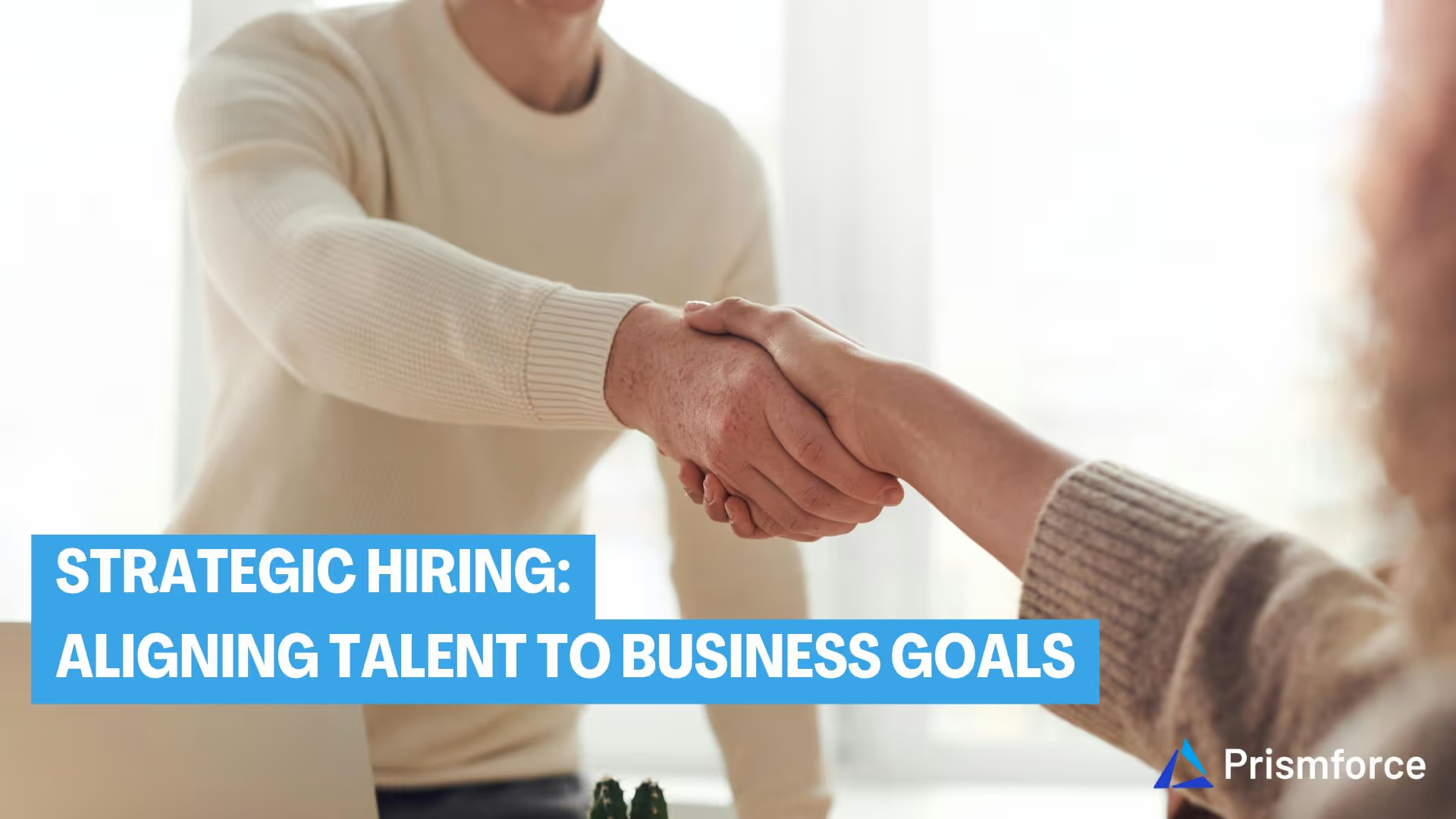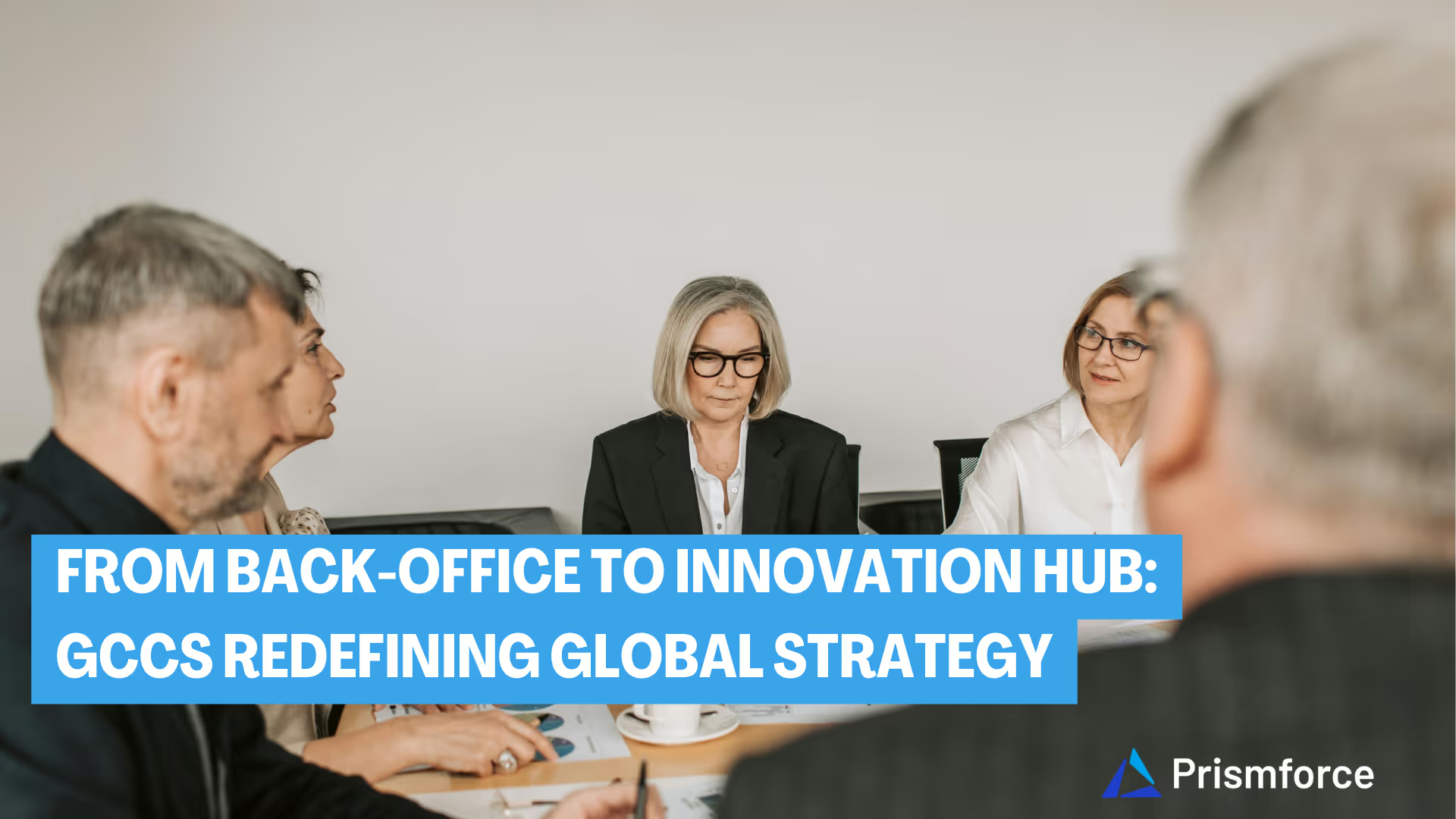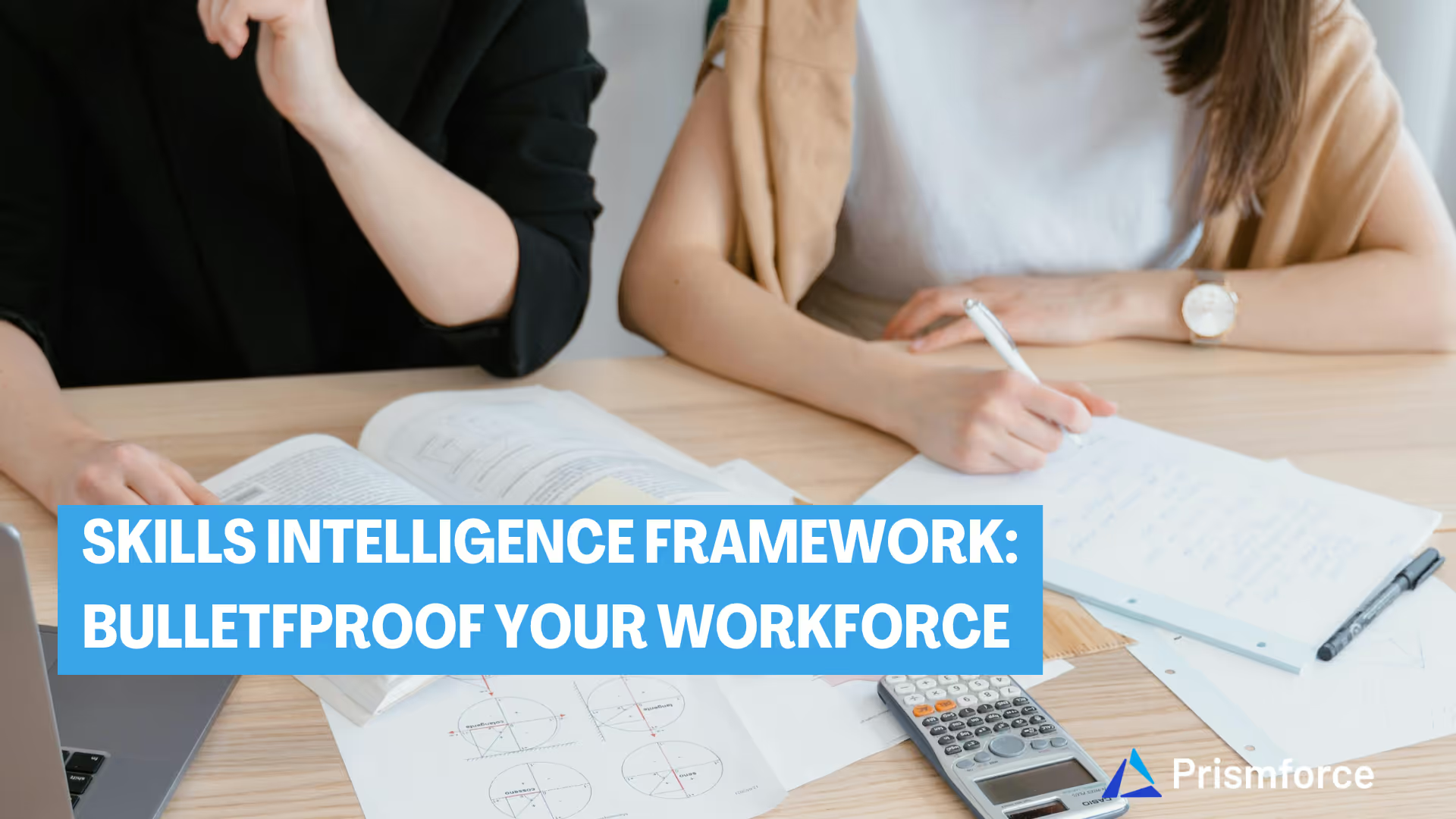
Introduction: The New Talent Reality
Organizations today face an undeniable talent crisis. CTOs and HR leaders across industries share the same concern: retaining top performers in an increasingly competitive landscape.
The tech industry has always experienced fierce competition for talent, but 2025 presents challenges that make previous hiring cycles seem straightforward by comparison. Companies finding success in this environment aren't simply increasing compensation packages (though competitive salaries remain essential). They're fundamentally reimagining their approaches to talent attraction, development, and retention.
This guide moves beyond theoretical HR concepts to focus on practical, proven strategies: responding to turnover with data-driven insights, implementing technology that delivers genuine value, and building talent systems resilient enough to withstand leadership transitions and market fluctuations.
For business leaders seeking to develop competitive advantages through strategic people management, this roadmap offers actionable approaches that deliver measurable outcomes.
The Evolving Talent Landscape: Fundamental Shifts
The Great Resignation: Beyond the Headlines
The much-discussed "Great Resignation" wasn't merely a temporary phenomenon—Bureau of Labor Statistics data confirmed its reality with 3.98 million Americans quitting their jobs monthly in 2021.
For the tech industry, this massive workforce reshuffling signaled a permanent shift in the employer-employee relationship rather than a momentary disruption.
Progressive tech organizations have responded by rebuilding their employee experience around five essential elements:
- Comprehensive onboarding processes that establish immediate connection and clarity
- Personalized career development pathways tailored to individual aspirations
- Continuous feedback mechanisms that replace outdated annual review cycles
- Compensation frameworks benchmarked against current market realities
- Growth opportunities aligned with both organizational needs and personal development goals
Remote Work: The Human Element
The pandemic accelerated existing remote work trends rather than creating them. By 2025, hybrid workplace models have become standard practice across the tech industry.
Competitive differentiation now comes from effectively addressing the interpersonal aspects of distributed work. Organizations struggling with this transition often experience elevated turnover rates, as one fintech company discovered when treating digital communication as equivalent to meaningful connection.
Companies excelling in hybrid environments have progressed beyond basic implementation to create:
- Virtual team experiences that foster authentic connection
- Collaboration tools selected based on user experience and adoption rates
- Management practices focused on outcomes rather than activity monitoring
- Flexible scheduling that accommodates global team distribution
- Workspace designs optimized for collaboration rather than individual productivity
The Accelerating Skills Gap
Technical skill relevance continues to shrink in duration. Yesterday's cutting-edge frameworks become today's legacy systems, while emerging technologies rapidly transform from specialized knowledge to baseline expectations.
This acceleration has revealed significant gaps in how organizations approach professional development. Forward-thinking talent leaders have abandoned conventional training programs in favor of:
- Learning ecosystems integrated with daily workflows
- Strategic educational partnerships aligned with industry evolution
- Internal mobility initiatives with transparent pathways and support
- Structured mentorship programs to address skill gaps with measurable outcomes
- Microlearning approaches designed for adult learning preferences
Building a Resilient Workforce: Fundamental Elements
Employee Experience: Substance Over Style
Surface-level perks—however impressive—fail to create lasting engagement when fundamental workplace needs remain unaddressed. Organizations achieving exceptional retention focus consistently on:
- Onboarding that integrates new hires into meaningful work and relationships
- Career visibility that illustrates potential growth trajectories
- Purpose alignment between individual contributions and organizational mission
- Work-life boundaries that prevent burnout and promote sustainable performance
- Recognition systems customized to team-specific and individual motivators
Innovation Culture: Systematic Creativity
Innovation emerges from organizational environments rather than isolated initiatives. Companies consistently generating market-leading ideas have established conditions where:
- Calculated risk-taking receives encouragement and protection
- Dedicated exploration time exists without immediate ROI requirements
- Cross-functional collaboration occurs organically through organizational design
- Innovation challenges address genuine business problems rather than hypothetical scenarios
- Collaborative spaces remove friction from collective ideation processes
Mental Health: The Overlooked Competitive Advantage
Burnout continues to affect technical talent at alarming rates, with consequences ranging from reduced productivity to complete industry exodus. The human cost extends to organizational performance through lost creativity, diminished collaboration, and institutional knowledge gaps.
Organizations building sustainable talent supply chain ecosystems have implemented comprehensive approaches including:
- Mental healthcare benefits with parity to physical health services
- Work boundaries modeled at leadership levels rather than merely documented
- Accessible stress management resources without stigma or career implications
- Management training that includes recognition of psychological well-being indicators
- Wellness approaches integrated into work design rather than offered as separate programs
Leveraging Technology: Strategic Implementation
AI and Automation: Purposeful Application
While every HR technology vendor now claims AI capabilities, meaningful applications focus on solving specific challenges rather than adding complexity to existing processes. Effective implementations include:
- Resume screening that mitigates bias through careful algorithm development
- Conversational interfaces designed to enhance candidate experience
- Predictive analytics identifying retention risks early enough for effective intervention
- Learning recommendations that deliver contextually relevant content
- Performance data collection that enhances quality while reducing administrative burden
Data-Driven HR: From Information to Insight
Impressive analytics dashboards create value only when connected to decision-making processes. Organizations making genuinely data-informed talent decisions focus on:
- Workforce planning directly connected to business strategy
- Compensation analytics that proactively identify equity concerns
- Diversity metrics driving specific interventions at systemic points
- Engagement insights linked to leadership behaviors and team experiences
- Recruitment analytics balancing efficiency with candidate quality and experience
Measuring What Matters: Impact Over Activity
Leading talent organizations have shifted from volume-based metrics to indicators that drive meaningful action:
- Hiring effectiveness balancing efficiency with quality indicators
- Retention patterns analyzed by team, function, and leadership
- Performance measured through business outcomes rather than arbitrary distributions
- Learning effectiveness evaluated through skill application
- Career mobility examined for systemic patterns and barriers
Implementation: Execution Framework
Clear Goals: Strategic Alignment
Talent strategies require direct connection to business objectives for meaningful impact. Effective organizations establish:
- Specific objectives directly supporting strategic priorities
- Measurable targets with executive-level visibility and accountability
- Vertical alignment throughout organizational planning processes
- Realistic expectations informed by industry benchmarks and organizational context
- Time-bound milestones creating implementation accountability
KPIs That Drive Action: Meaningful Measurement
Metrics should guide strategy refinement rather than simply document activity. Actionable indicators include:
- Acquisition metrics predictive of subsequent performance
- Engagement measures sensitive to early warning signals
- Retention analytics segmented by performance and potential
- Development metrics focused on skill application
- Diversity measures throughout talent pipelines
- Productivity indicators reflecting value creation
- Succession metrics revealing organizational resilience
Implementation Roadmap: Structured Progression
Talent transformation requires methodical execution over time. Comprehensive roadmaps include:
- Phased implementation balancing quick wins with long-term objectives
- Resource requirements clearly identified and secured
- Stakeholder alignment from executive leadership to frontline management
- Communication strategies maintaining momentum through implementation challenges
- Risk assessment identifying potential failure points with mitigation strategies
- Technology architecture designed for integration rather than fragmentation
Measuring Success: Continuous Adaptation
The rapidly evolving talent landscape necessitates adaptive strategies. Effective feedback mechanisms include:
- Regular progress reviews with diverse stakeholder representation
- Employee feedback channels revealing ground-level realities
- Data analysis identifying both anticipated and unexpected patterns
- External benchmarking against industry leaders
- Improvement cycles modifying approaches based on emerging insights
Conclusion: Sustainable Advantage
Building a resilient talent strategy for 2025 requires creating an organization capable of thriving amid continuous change rather than predicting specific future conditions.
Successful organizations recognize talent strategy as a business imperative demanding the same rigor, investment, and leadership attention as product development or market expansion.
By addressing fundamental workforce needs, strategically implementing technology, and executing with disciplined focus, organizations can develop talent advantages resistant to competitive replication.
Talent strategy represents an ongoing commitment rather than a completed initiative. In an environment where technology and business models face rapid commoditization, people remain the most sustainable source of competitive differentiation.
The most successful organizations invest accordingly.





